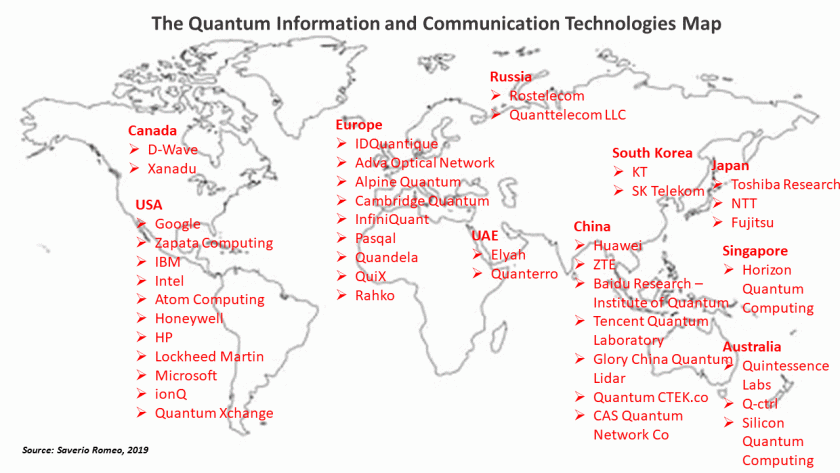While the attention of the digital technologies community is attracted by the arrival of 5G, the rise of edge computing, and the impact of Artificial Intelligence (AI), there is a technology framework that is taking shape and getting ready for dramatically change the way we do cybersecurity, networking, communication and the IoT too. That framework is the Quantum Information and Communication Technologies (QICT).
The application of quantum physics is not really new. Quantum scientists and experts talk about a Quantum 1.0 and Quantum 2.0. We are fully immersed in Quantum 1.0 when we go to the hospitals and use resonance imaging systems, which are based on lasers, which exist because of quantum physics. Lasers are present in many other devices including in the transistors of our phones. Despite that, we feel uneasy with the concept of quantum because we cannot really see it. Quantum physics describes the world of the ultrasmall, single particles and indivisible unit of light. But that unseeable and miniscule planet around us can give us phenomenal changes in information and communication technologies.
2019 has been a very constructive time for the QICT community. The International Telecommunication Union (ITU) has set up a focus group on the topic gathering the best of the quantum ICT community worldwide. This community, coming from academia, government and private sector, has gathered in a major event in June to make the point of the situation. The work of this group revolves around three areas:
- Quantum communication and quantum networks. The starting point is ensuring protection of the data exchanged across existing – also called classical – networks. In a quantum network, a photon transport that data. If anything intercepts the photon, it will be noticed. It means that is impossible to intrude without being detected. In the market place, there are already quantum network solutions as described for point-to-point communications offered primarily to financial organisations, but everyone else interested in this level of security. This work is expanding towards multi-point to multi-point communications, also called the quantum Internet. There are several technological challenges to face for reaching that, but the quantum Internet will change dramatically the Internet and networks we have used so far and not just in terms of security.
- Quantum sensing and metrology. The applications of quantum physics on sensing will bring us a dramatic improvement in the accuracy of measurements and the performance of the sensors. Quantum sensors will impact all the areas of applications of the Internet of Things.
- Quantum computers. Quantum computers will provide us with enormous computing power to solve problems that are hard or even impossible to solve otherwise. Quantum computers are built on quantum bits (Qbits) (atoms, photons, ions) and use concepts such as superposition and entanglement for solving problems.
The research on these areas are not only academic-based, but there are several companies – large and small – working on them. In the area of point-to-point quantum communication, there are also commercial solutions available. The picture below provides a map of companies worldwide providing quantum ICT solutions.

There is then a strong commitment from governments on quantum information and communication technologies.
- China is investing in all the three areas, but its current work in quantum communication is impressive with a national Q-backbone (Bejing-Shanghai), a Q-satellite, and intercontinental connection (Vienna-Bejing).
- The EU QT-Flagship programme invests €1bn in 10 years time with 20 projects during the period 2018-2021.
- The Russian Digital Program includes investment in quantum technologies. There are three research centers: Moscow, St.Petersburg and Kazan, several quantum networks testbeds and working towards a Q-satellite launch in 2023.
- The Q-Leap Flagship programme in Japan works on all the three areas.
- The CERN has launched IDEASQUARE, a program that brings together researchers and companies on quantum ICT.
- In Dec 2018, the USA launched the National Quantum Initiative for investing on Q-related activities $1.2bn in the next five years.
- The UK launched its quantum program in 2014 investing at the time £270 million.
The road to a major impact of quantum ICT on economy and society is quite long with several obstacles to solve. Those are not just technological ones. Standards are necessary for accelerating the development of quantum ICT. That was a major topic of discussion at the ITU focus group conference last June. Despite all that, the Quantum 2.0 phase is becoming more real. Point-to-point quantum communication is in the marketplace. Stay tuned for more developments during the period 2020-2023.